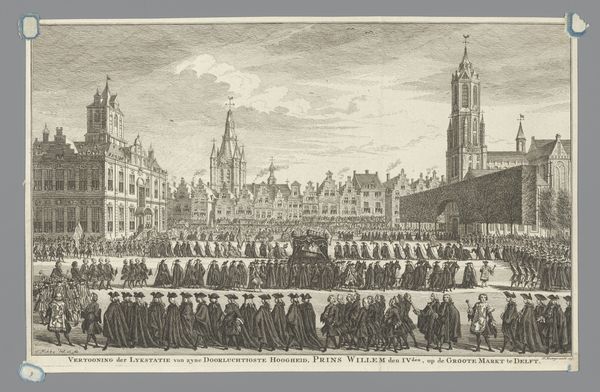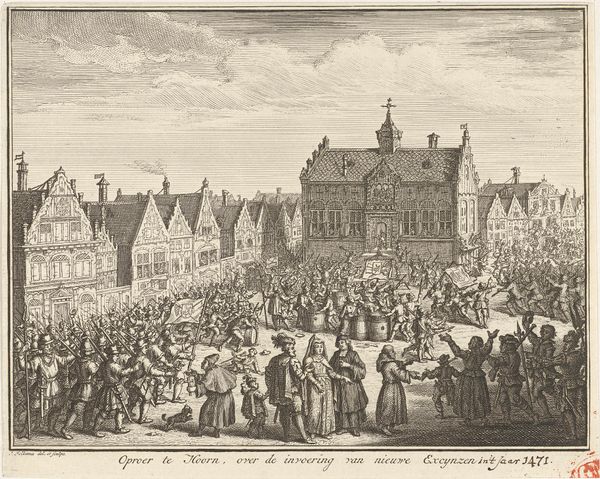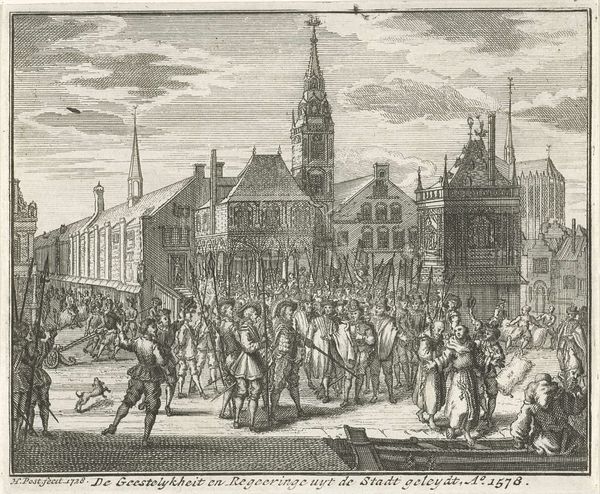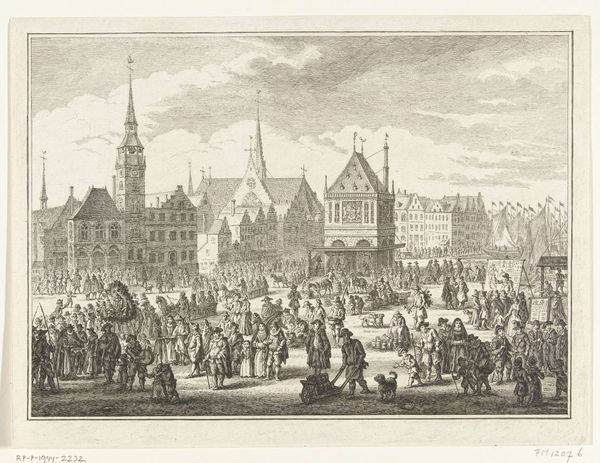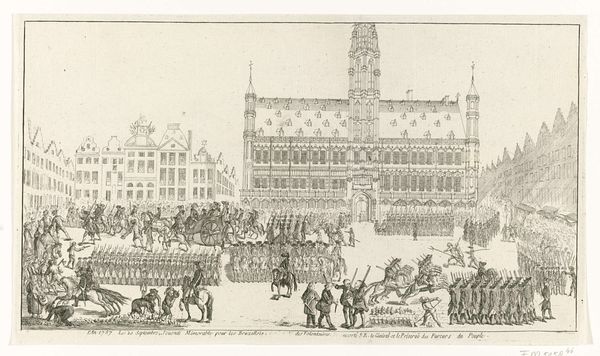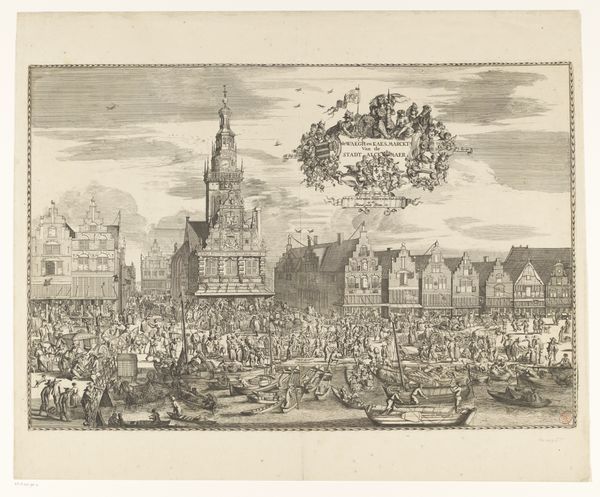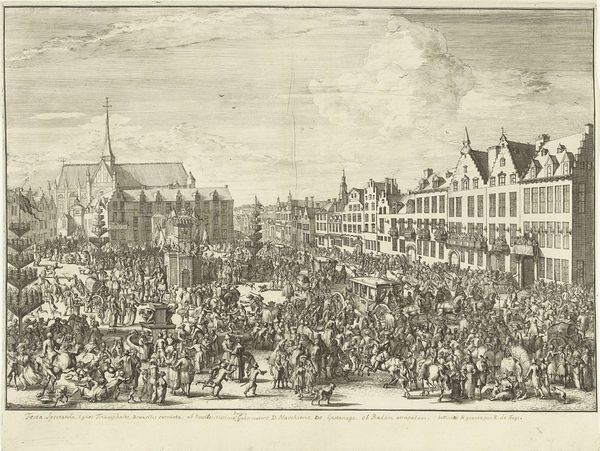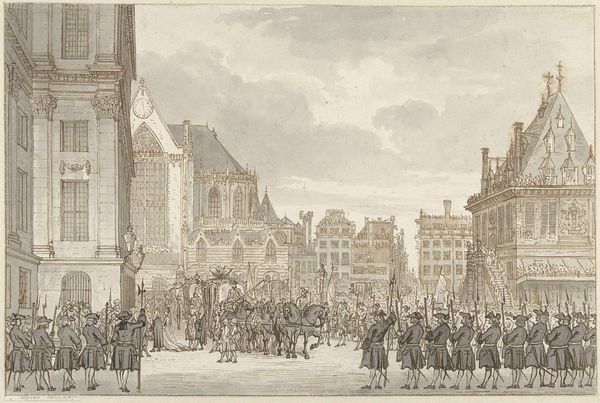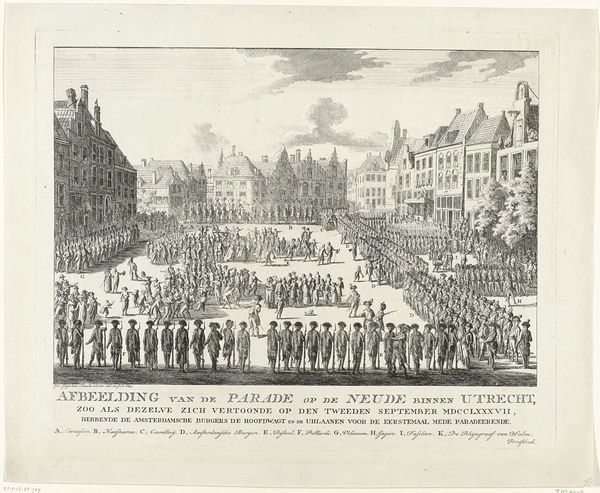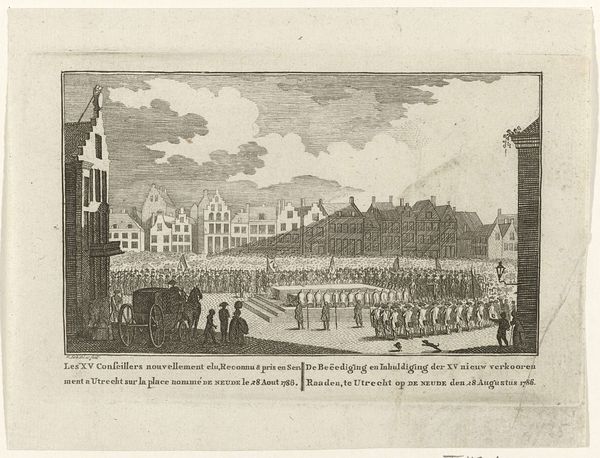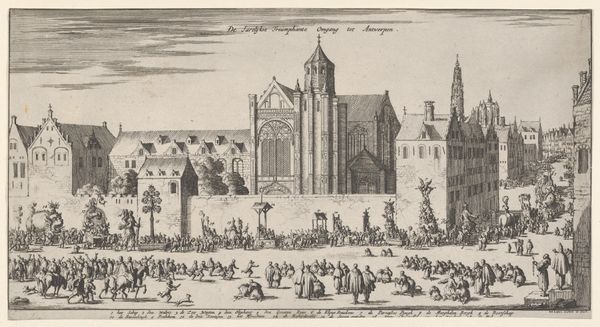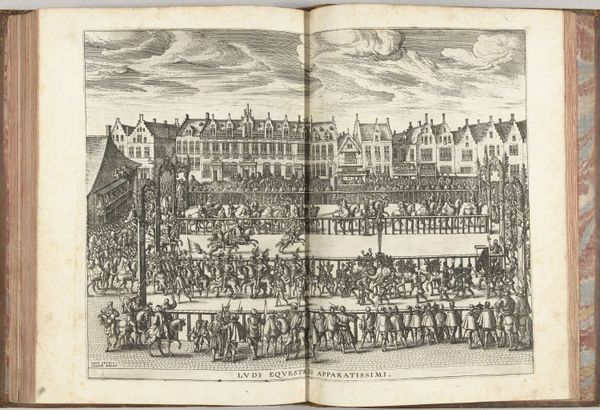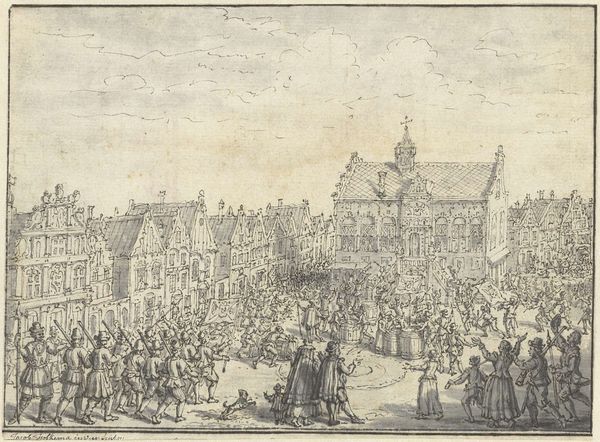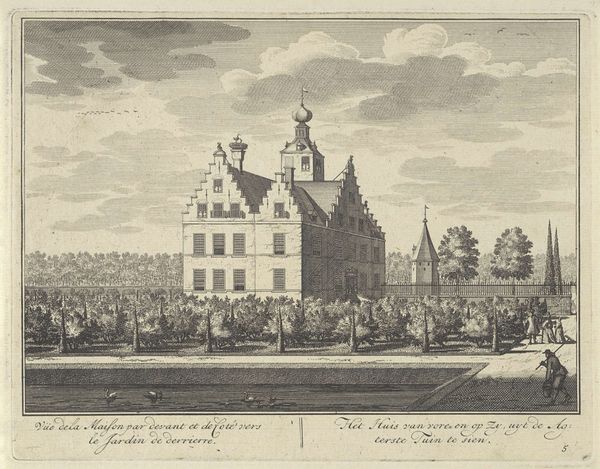
drawing, ink, engraving
#
drawing
#
baroque
#
ink
#
cityscape
#
history-painting
#
engraving
Dimensions: height 191 mm, width 302 mm
Copyright: Rijks Museum: Open Domain
Curator: Here we have Simon Fokke’s 1752 ink and engraving rendering of "Lijkstatie van prins Willem IV te Delft, 4 februari 1752," or the funeral procession of Prince William IV in Delft, housed right here at the Rijksmuseum. What are your first thoughts? Editor: It's somber, undeniably. A long line of figures shrouded in dark robes advances through what looks like a grand urban space, rendered meticulously. You can almost feel the weight of the moment in the solemn procession. Curator: Indeed, and note the architecture dominating the backdrop, signifying power and permanence, which provides an interesting lens to consider social and political structures. The focus on urban planning as a display of power also speaks volumes. Who dictates these structures? How does a cityscape solidify power? Editor: I’m also intrigued by the craft, specifically the engraving and ink work. Look at the precise details. This isn't just about depicting grief or royal ceremony, it’s a careful production of images intended for wide circulation, almost like early forms of political documentation for a specific kind of audience. What would an engraving mean to different societal classes? Curator: The procession, a display of social hierarchy, moves within this staged landscape, echoing and reifying the existing order. The very act of producing this image, disseminating it, entrenches these structures. Notice how individuals in the procession adhere to a strict uniformity of dress, symbolizing their allegiance to the late prince, yes, but more significantly, their role within this hierarchy. The clothing becomes material, not just symbolic, manifesting societal rules in real life. Editor: Exactly. The scale of the buildings is emphasized, dwarfing the figures and making them less individual, emphasizing instead their place within the spectacle. Even the materials, ink, engraving on paper, become symbolic because paper means it's for distribution. I wonder about the engraver's role, and the means of his production. Curator: It allows us to delve into questions of authorship and artistic intention. To understand not just what the piece depicts, but how it actively reinforces the existing social dynamics of its time. Perhaps an artist's intentionality doesn't matter as much as how art actively plays out through political systems? Editor: This procession and its record, were they really about mourning the Prince, or were they designed to create social cohesion, to solidify the monarchy's material presence in everyday life through circulation? Food for thought indeed.
Comments
No comments
Be the first to comment and join the conversation on the ultimate creative platform.
